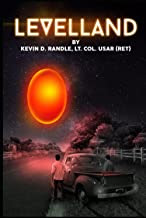Not all that long ago the History Channel repeated a number of the old "In Search Of" episodes. These were interesting, not so much for the content, but because some of them were so out of date. Answers to questions that were once puzzling and mysterious have been found in recent years. The producers of the programs, in the 1970s when they were made, could not be expected to see into the future for these reports.
Take, for example, the story of Anastasia, one of the daughters of the last Russian Czar. History had told us that the Czar, Nikolai II (or Czar Nicholas if you prefer an anglicized version of the name), with the members of the royal family, had been assassinated by the communists in the summer of 1918. The bodies were taken from the murder site and buried miles away. The communists controlled all that information, and while we outside the Soviet Union were aware of the assassination, we knew very little about it.
Enter Anna Anderson (or Andersen, according to some information), a poor woman who was pulled from a canal in Germany about 18 months after the murders. Although her memory was faulty, she did suggest that she was Anastasia. She had been badly wounded during the assassination but she had survived. She spent her life trying to convince the world of who she was. Of course, surviving Romanovs, other relatives of the Czar living in other parts of Europe, thought she was lying about it. Former members of the royal house were split on the authenticity of Anderson’s claim. There were a few who believed her. She did seem to know things that only a member of the royal family would know, she did seem to have memories that confirmed her claim and she did have some scars that were like those on the real Anastasia.
So Anna found supporters, lived in the shadow of her former royalty but never really gained the wealth that the old European family controlled. She died more than two decades ago. With her, died her secret, or so claimed "In Search Of…" There was no way that we would be able to resolve the questions, now that Anna was dead.
The collapse of the Soviet Union, however, provided clues. Information that had been buried in state archives was now open for scrutiny. According to that new information, the royal family was awakened late at night, told to dress and then escorted to a basement room. There, believing that photographs were going to be made, the family arranged themselves in two rows.
Without warning, armed men entered the room and began to shoot. The Czar’s daughters might have survived the first shots because they had sewn jewels into their clothes. The Czar’s son might have survived as well, only to be shot in the head when he was heard moaning. Anastasia crouched in a corner, wounded but not badly. A maid who was not killed by the bullets was bayoneted. Anastasia was also bayoneted.
The assassins first took the bodies to a mineshaft and tossed them in. Later they were recovered, some were burned and others covered with acid. Eventually they were buried in a forest, the location hidden by the Soviet government.
There were rumors that one of the Czar’s children survived. In fact, several women claiming to be Anastasia appeared over the years. Anna Anderson is the most famous. Eugenia Smith was another but the lion’s share of the attention went to Anderson.
When Anderson was pulled from the water in 1920, she had no identification and she refused to give her name. She was transferred to a mental hospital where someone supposedly recognized her as a Grand Duchess. Not Anastasia, but Tatiana, one of her older sisters. She didn’t deny it, but she never said it either. When given a list of the Czar’s daughters, she crossed out all the names except Anastasia.
Trying to prove her identity, officials arranged for one of her mother’s ladies-in-waiting to visit her. Anderson hid and the lady-in-waiting declared she was an imposter. Anastasia’s tutor, Pierre Gilliard said that he thought she might be Anastasia but later said she was not.
Nikolia’s cousin, Grand Duke Alexander, after spending time with Anastasia said, "I have seen Nicky’s daughter." And a cousin, Princess Xenia (do you really think I could have not mentioned a princess with that name) was a supporter of the claim.
Anderson filed suit in a German court in 1938, attempting to prove her identity. Anthropologist Otto Reche testified that Anastasia and Anna Anderson were one in the same, or that they had been identical twins. The suit was finally settled in 1970, with the court ruling, not that Anderson wasn’t Anastasia, but that she had failed to prove that she was.
Then, of course, came the collapse of the Soviet Union. Included in the state archives, now available to researchers from around the world, was information about the gravesite. Excavations found that all but two of the Romanovs had been buried together. Missing, based on the evidence, were Alexei who would have become Czar and Anastasia. At least that was the consensus. Those other two had been buried somewhere else.
The door that had remained slightly open was quickly closed. The "In Search Of…" program predated the discovery of DNA "fingerprinting" and DNA mapping. It predated the research that is so common now, that proves paternity in so many cases, and solves so many crimes. It was used to confirm that the Czar, his wife and three of his daughters, along with four others, servants, maids, and a doctor were buried together.
Samples of Anna’s DNA (thought of as hair and blood samples so long ago) had been preserved. DNA of the Romanov family line existed in the members of that royal family. And with the majority of the bodies found, other DNA sampling was possible. The conclusion, based on the DNA evidence, was that Anna was an imposter. She was not the sole surviving member of the Czar’s family. The real Anastasia died with the rest of her family.
But as is so often the case, the believers simply would not let go. The hair sample, which came from a North Carolinian who had outbid others for some cartons of books owned by Jack Manahan, who had married Anna Anderson late in life was challenged. In the box, packed by Althea Hurt, one of Jack’s relatives, was a sample of hair. There is no positive way to link it to Anderson, other than the box came from Anna’s husband and it was deduced that it was Anna’s hair. The provenance of it is somewhat shaky.
The second sample is a section of intestine that had been kept at the Martha Jefferson Hospital. Here the provenance is better. The sample was sent from Charlottesville to England where the testing was done. Although mailed, it required special handling so that it could be tracked the entire way. The provenance, and a chain of custody because it had to clear customs, has been preserved.
Believers suggest that the Romanov family, which has much to gain if Anna was proved not to be Anastasia, might have intercepted this package along the route and switched it for another DNA sample. One that surely would not match.
But here we move into conspiracy a little too deeply. We have the definitive evidence in the form of DNA. We have the evidence from the Russian archives. We have the testimony of the men who carried out the assassination, in the form of careful reports made in 1918. Reports that were detailed enough that the majority of the bodies were found. Clearly there is no longer a doubt that Anna Anderson was not Anastasia.
And as if that wasn’t enough, it seems that the DNA proved that Anna Anderson had been Franziska Schanzkowska, a Polish factory worker who disappeared the night that Anderson appeared. A factory worker, by coincidence who had been injured by a grenade that detonated in the factory where she worked and therefore having some scares that matched, generally, those of the real Anastasia. (And no, I’m not going to wonder how they managed to get a DNA sample of this woman for comparison. I’ll merely note that it seems a tad bit incredible.)
So, while the producers of "In Search Of…" in the 1970s believed that the question of Anastasia might not be resolved, it seems that it was. The documentation found in the Russian archives and the DNA evidence proves that Anna Anderson was not Anastasia.





















